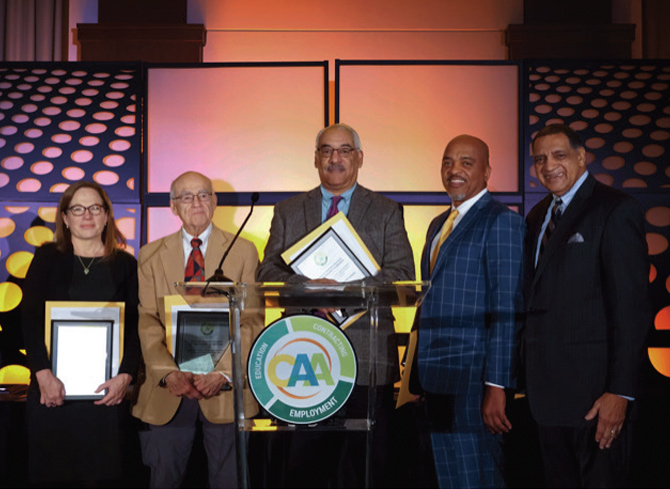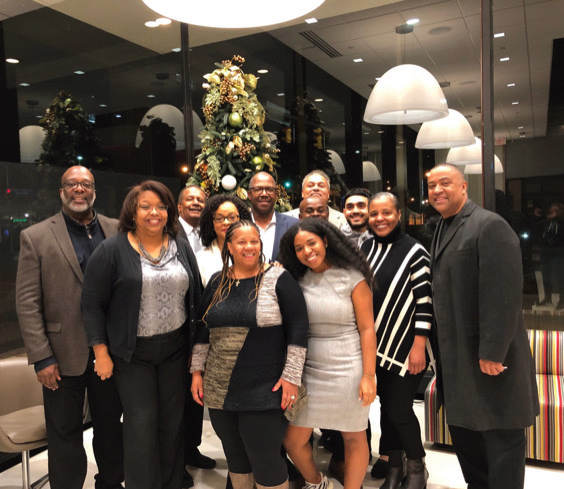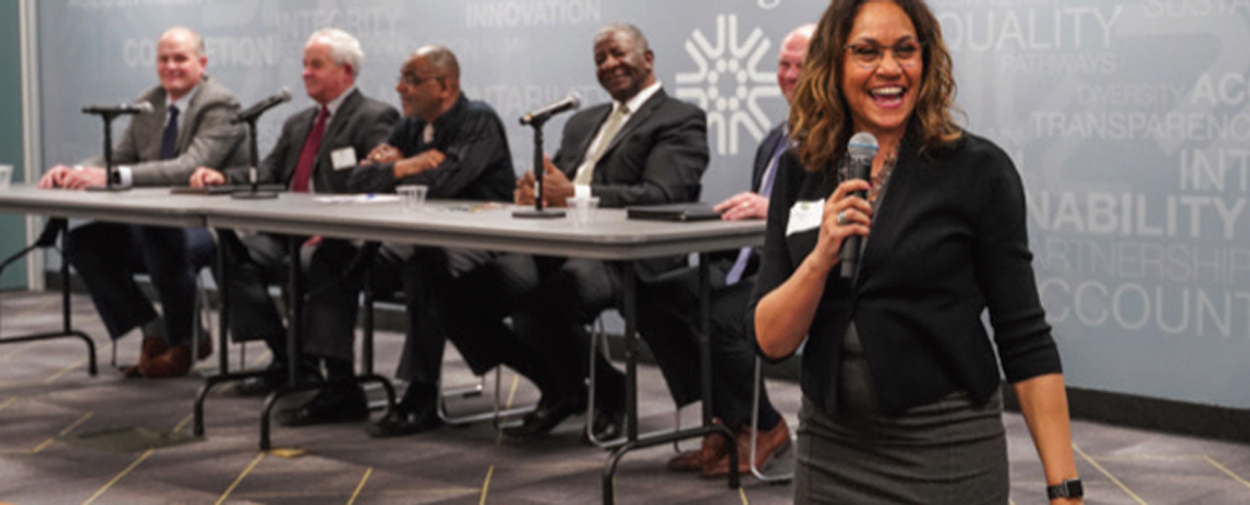Business
Construction Assistance Association Address DEI Issues In Construction

Fifty-two years ago, a group of minority contractors formed Cleveland Contractor’s Assistance Corporation (CCAC), with the late James H. Walker serving as the executive director. Some of the early members included Ware Plumbing, B.L. Scott Masonry, Minority Steel Erectors, Durham Brothers Construction, Burks Electrical Co., Decorama Painting, ColeJon Mechanical, Ozanne Construction, Bradley Construction, Cook Paving and others. This earlier version of a minority contractors group existed in the 1970s and 1980s.
One of the more significant activities of CCAC was the development of their Construction Management Training Course which later became the James H. Walker/Turner School of Construction Management, currently in its 53rd year. Even though CCAC dissolved, a few of the companies are still in business.
In 2008, several industry professionals decided to re-institute the organization, establishing the Construction Assistance Association (CAA), an affiliate of the Construction Employers Association (CEA). “There was no multi-racial construction organization with minorities and women as members and in leadership positions. In addition, we wanted to focus on contracting, employment, and construction education just as CCAC and Cleveland Hometown Plan did back in the day,” said Dominic Ozanne, CEO of Ozanne Construction, the first president of CAA, and current chairman of CEA.
“The purpose of the new CAA,” Ozanne continued, “was to create, within CEA, an organization consisting of the owners of majority, minority, and female firms that would collaborate to create and support mentor-protégé and assistance programs to grow competitive, union-affiliated minority and female construction companies, promote construction education and pre-apprenticeship training for young people, especially Cleveland Metropolitan School District students, and promote employment goals and targeted hiring programs to provide employment opportunities for Cleveland residents, minorities, and women.”
Over the last twelve years, CAA has accomplished that mission and more. CAA has grown from two to nearly thirty minority and female-owned businesses that have regular interaction with owners discussing topics such as how to do business with, how to improve processes, and more. The organization engages members in unique experiences such as the CAA Lunch program, CAA Shark Tank, and CAA Exchanges.
Heather Baines, president of HR Construction and CAA secretary, participated in the recent CAA-University Circle Incorporated (UCI) Exchange. Paired with The Cleveland Art Museum, she found the Exchange to be beneficial. “To at least be able to have an introduction, if nothing else,” she said. She appreciates how the Exchanges provide an opportunity to meet an institution’s procurement person and each Exchange allows to further develop the relationship.
“If something comes up even a year from now, they’ll remember you. Some people have had great outcomes,” said Baines, who as a board member, believes it’s important for CAA to provide members with opportunities to interface with owners and general contractors.
“One thing I like about CAA is the chance to interact with the big companies,” says Stephen Coleman, president of Northstar Contracting Inc., a 15-year-old company specializing in concrete work and construction management. He also appreciates receiving weekly emails notifying him of bidding opportunities but would like to see more collaborations on projects between the bigger and smaller companies.
CAA member Rhoni Thompson, president of R.L. Cole Enterprise, a trucking operation, believes the opportunity to access loans, grants, bonding with realistic and attainable requirements, access to back-office assistance and education, and access to soft support skill development are needed to support Female Business Enterprises (FBE) in this industry.
The opportunity to be a part of industry networks, representation on boards, and discussions with community stakeholders are needed as well, she says. “In addition, what I have found extremely beneficial is the opportunity to be amongst other women in this industry or women in leading positions in their organizations,” says Thompson. “We learn in many ways and when I am able to be an active listener in specific settings, I truly absorb the available lessons.”
Thompson says CAA has provided her with opportunities to do everything she mentions above. “But just because we have the opportunities doesn’t mean it’s all going to make sense or be necessary immediately,” she says. “Learning sometimes needs to be repetitive and depending on the rhythm of your business learning can be cyclical.”
CAA has afforded Thompson the chance to engage with potential customers and make them aware of the best things about R.L. Cole. “Repeatedly doing that has allowed me to become comfortable with that type of interaction.” Through those conversations, she listened for possible gaps in her service, allowing her to circle back to the supporting services within community agencies. And lastly, she says, CAA has been a platform where she could meet people who support her interest in building a solid back office.
“I would love to be a part of a mentorship relationship geared to learn one or two things from a larger corporation or educational institution that believes there is a benefit to assisting the small business scale to the next level.” She envisions a curriculum or guides addressing things from the basics to the next two levels beyond the mentee’s current position and the internship would last approximately 6-12 months.
CAA member Morgen Cost, president, of Cleveland Building Restoration LLC & Total Roofing Services, says, “As with any successful business, throughout the growth cycle of the organization, FBE owners have varying needs at specific times.”
For instance, she says, when a new company is formed, much support may be needed in the form of mentorship and access to some industry business questions such as how to complete a Request for Proposal (RFP) or how to get bonded. “Once a company has hit its stride, there is a shift to different needs, such as a focus on client development and employee training opportunities,” Cost adds.
She identifies other needs through an FBE growth cycle as access to a skilled workforce, opportunities for client development/networking, access to education, training and industry information, up-todate safety information, mentorship opportunities, and peer support. “CAA provides access and avenues for all of these needs,” she says. “As a CAA member, I’ve experienced wonderful networking opportunities, which allow me to potentially grow my business. I am meeting business owners and decision-makers who I may not interface with otherwise.”
Cost says these opportunities to meet and greet allow her to inquire about their needs and business plans while also communicating her capabilities for their potential future needs. “Companies are only as good as their people,” says Cost. “Having access to skilled labor through the union affiliations and organizations like CAA, allow FBE companies to be truly successful.” Adrian Maldonado, president of Adrian Maldonado & Associates, has been in business for 15 years and a member of CAA for about four years. He agrees that minority contractors need all of the support mentioned by Thompson and Cost. But, patience is needed as well.
“We need patience from these bigger firms that talk about diversity and look for partners. For example, he says, when he worked with Turner Construction on the MetroHealth project, he made it known the necessity for him to get paid promptly so he can, in turn, pay his staff.
They worked to accommodate him but that’s not always the case with prime contractors. “Having the right partners is important,” he says. At the same time, he says, the small business owner has to be on his/her A game, able to carry their weight in regards to their staff and services or the prime contractor will begin to question their value to the project.
In regards to support for Latino construction companies, Maldanado says an organization’s actions must be inclusive of everyone from the beginning. “Don’t let us be an afterthought. Bring us to the table.” And, for many reasons, he believes his company’s membership to CAA has been beneficial.
“We get a lot of exposure,” says Maldonado, who is grooming his daughter, Chelsea, to take over the business one day. She is the current vice president of CAA which allows her to build relationships with leaders and decision-makers within the industry. “CAA has been great. She has access to all of these guys,” he says.
By Rhonda Crowder
























